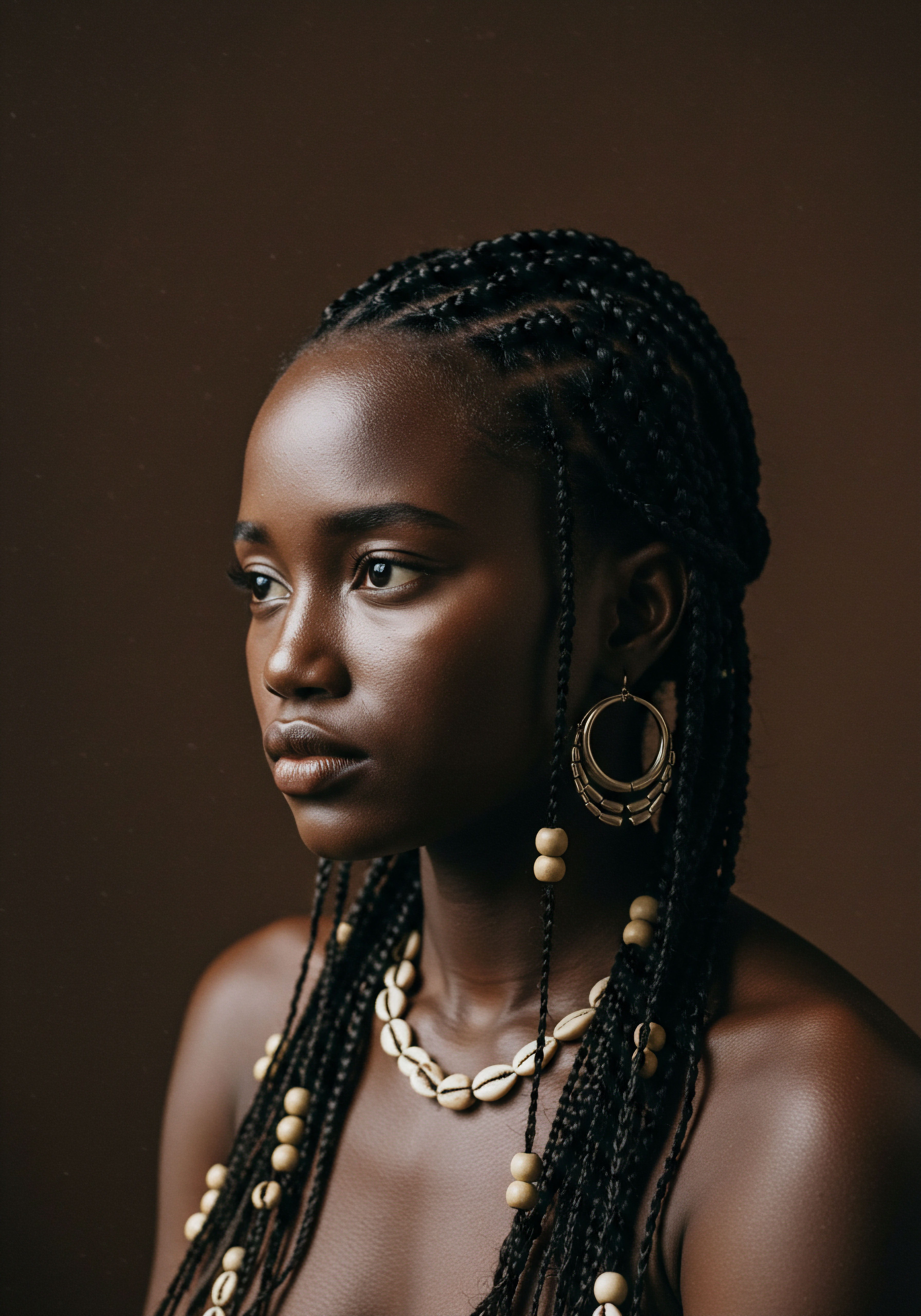
Roots
The whisper of the city, a symphony of daily life, often carries an unseen chorus ❉ urban pollutants. These microscopic presences, borne on the breeze, settle upon our hair, particularly textured strands, with a subtle yet persistent touch. Our hair, a crowning glory and a deeply personal expression, stands as a quiet sentinel against these environmental intrusions.
Understanding how natural ingredients offer a shield against these modern challenges requires a gentle journey into the very architecture of textured hair and the elements that seek to disrupt its inherent balance. It calls for an appreciation of the foundational aspects, a return to the very roots of what makes our hair unique and how it responds to the world around it.
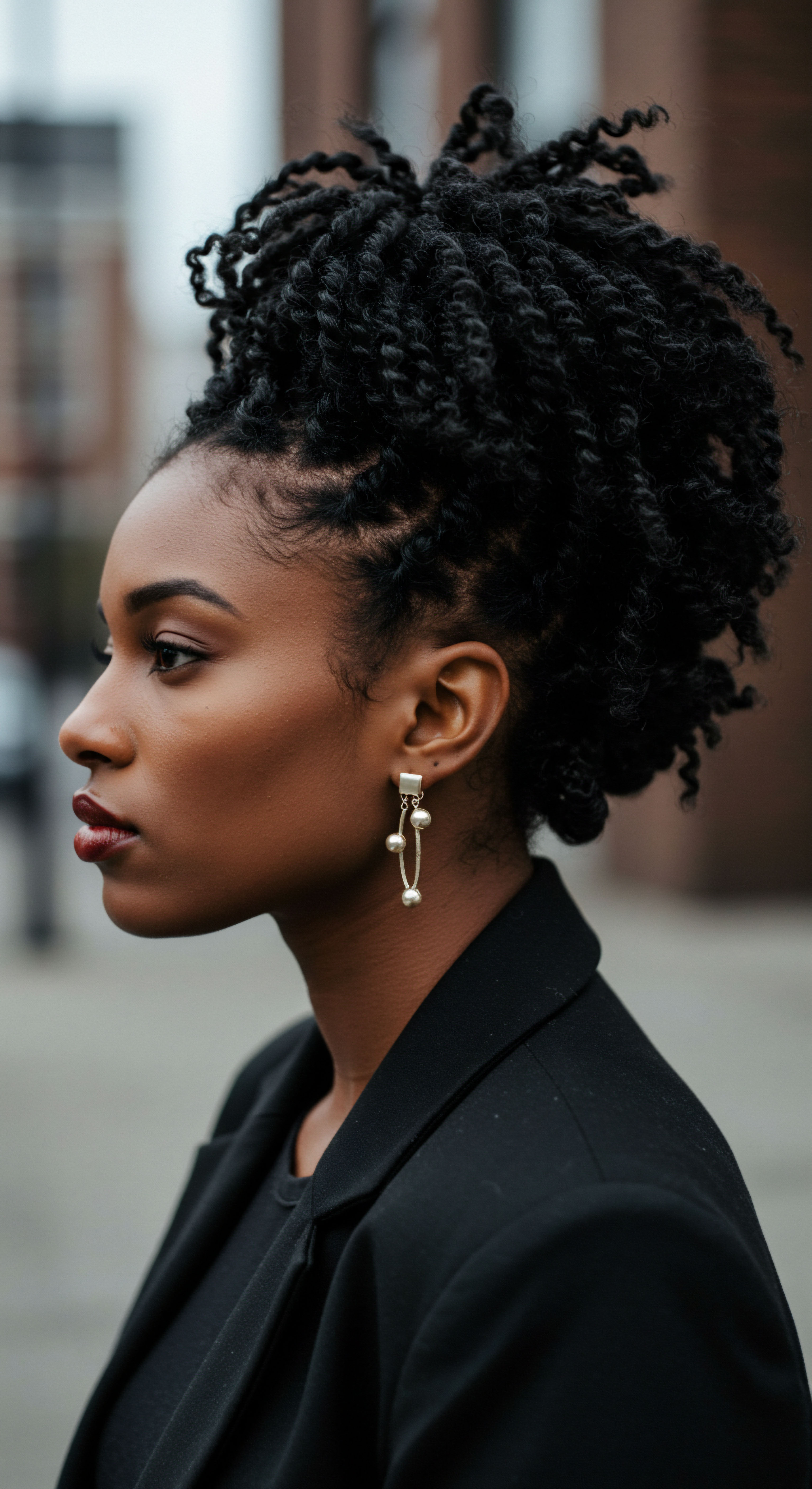
The Hair’s Protective Layers
Each strand of hair, regardless of its curl pattern, possesses an outer layer, the Cuticle, composed of overlapping cells. This layer acts as the first line of defense, a delicate armor protecting the inner cortex. For textured hair, the natural twists and turns along the strand can mean that these cuticle layers are not always as tightly sealed as on straight hair.
This structural characteristic, while contributing to the hair’s magnificent volume and bounce, can also present tiny openings, making it more susceptible to external aggressors. Urban pollutants, such as particulate matter (PM2.5 and PM10), heavy metals, and volatile organic compounds (VOCs), can adhere to this surface, and over time, some may even penetrate these protective scales.
Beyond mere adherence, these pollutants can chemically interact with the hair’s protein structure. Research has shown that air pollutants can directly attack hair proteins, leading to potential hair loss and degradation of the hair’s structure. The outermost layer of hair contains a hydrophobic lipid, 18-Methyl Eicosanoic Acid (18-MEA), which is highly vulnerable to external damage. Loss of this protective lipid renders the hair more hydrophilic, meaning it absorbs water more readily, and makes its cuticle and inner structure more prone to damage from environmental factors.
The hair’s outer cuticle, a delicate armor, can be particularly susceptible to urban pollutants, allowing for adherence and even penetration over time.

What Are These Urban Pollutants?
The air we breathe in urban settings carries a complex mixture of substances. Particulate matter, categorized by size as PM2.5 (fine particles) and PM10 (coarser particles), consists of fragments of dust, soot, and grime, often carrying adsorbed polycyclic aromatic hydrocarbons (PAHs). These tiny particles can settle on the hair’s surface, infiltrate the follicle, and reside on the scalp.
Gaseous pollutants, including nitrogen oxides and sulfur dioxide, also contribute to this environmental burden. Heavy metals, often byproducts of industrial activities, are another significant component of urban air, capable of accumulating on hair and potentially altering its structure and texture.
The collective impact of these airborne toxins extends beyond surface accumulation. They contribute to Oxidative Stress, generating reactive oxygen species (ROS) that harm hair follicles and accelerate hair aging. This oxidative onslaught can lead to decreased hair strength, reduced shine, increased porosity, and a general brittleness. Furthermore, continuous exposure can affect the scalp, causing irritation, itching, and even influencing sebum production, potentially leading to conditions like seborrheic dermatitis.
- Particulate Matter (PM2.5, PM10) ❉ Tiny airborne particles from vehicle exhaust, industrial emissions, and wildfires, which can adhere to hair and scalp, causing oxidative stress and structural damage.
- Polycyclic Aromatic Hydrocarbons (PAHs) ❉ Organic compounds often adsorbed onto particulate matter, capable of clinging to hair and inducing chemical damage to the cuticle and protein.
- Heavy Metals ❉ Elements like lead, cadmium, and mercury, which can accumulate on hair fibers, altering their composition and potentially contributing to hair loss.
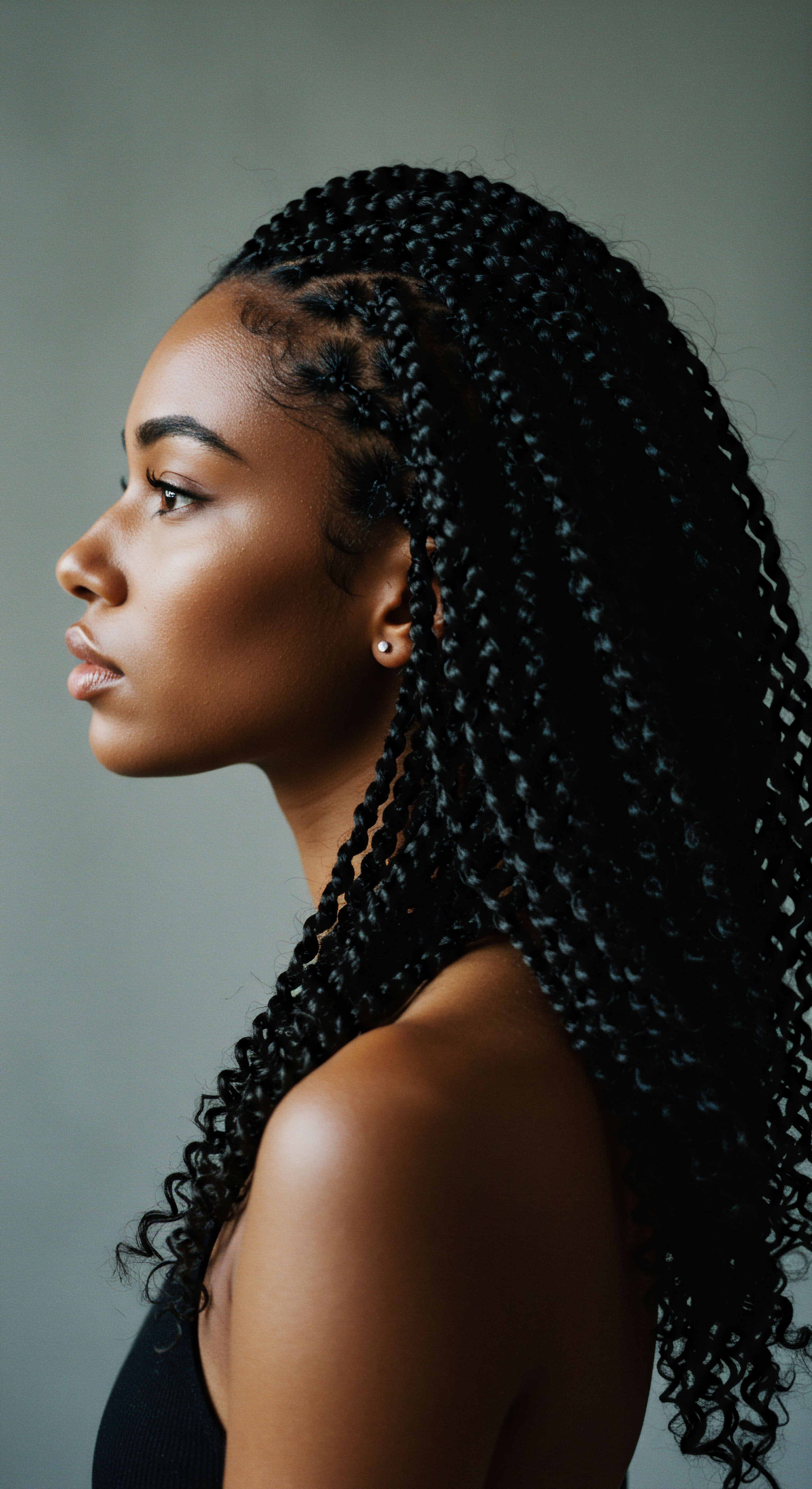
How Does Pollution Affect Hair Structure?
The damage inflicted by urban pollutants is multi-layered. Firstly, there is the physical adhesion of particulate matter, which can make hair appear dull and greasy. More concerning, however, is the chemical damage. Pollutants can cause protein degradation within the hair fiber itself.
A study presented at the 28th European Academy of Dermatology and Venereology (EADV) Congress revealed that air pollutants, specifically PM10-like particles, significantly lower key proteins essential for hair growth, including beta-catenin and cyclin D1. This reduction in growth proteins can directly impact the hair cycle, potentially leading to hair thinning and loss.
Beyond protein loss, pollution can cause oxidative modification of hair proteins, such as Carbonylation, an early indicator of damage. This process compromises the structural integrity of hair fibers, making the cuticle more permeable and the hair more prone to damage. The very architecture of the hair, its ability to retain moisture and resist external forces, is compromised. This becomes particularly relevant for textured hair, which naturally possesses a more complex and sometimes more open cuticle structure, rendering it potentially more vulnerable to these microscopic attacks.
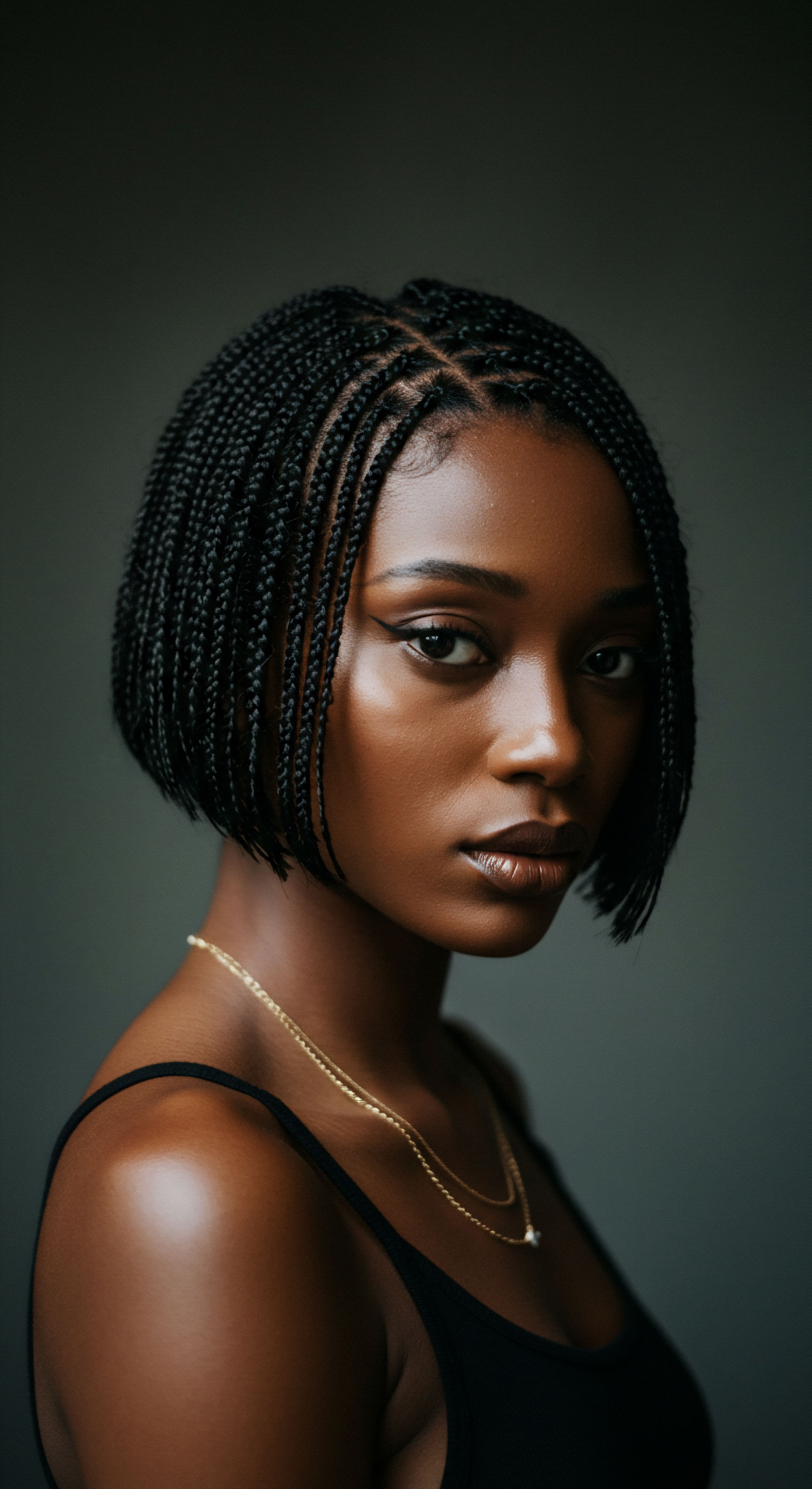
Ritual
Stepping into the realm of daily care, we consider how our routines can become a gentle yet powerful shield for textured hair against the unseen urban adversaries. This is where the wisdom of consistent, mindful practices meets the innate capabilities of natural ingredients. It involves understanding not just what to apply, but how these elements interact with our hair’s unique structure, transforming a simple wash day or conditioning session into a protective ritual. The aim here is to build resilience, to offer the hair the tools it needs to stand strong amidst the urban environment, always with a nurturing touch.
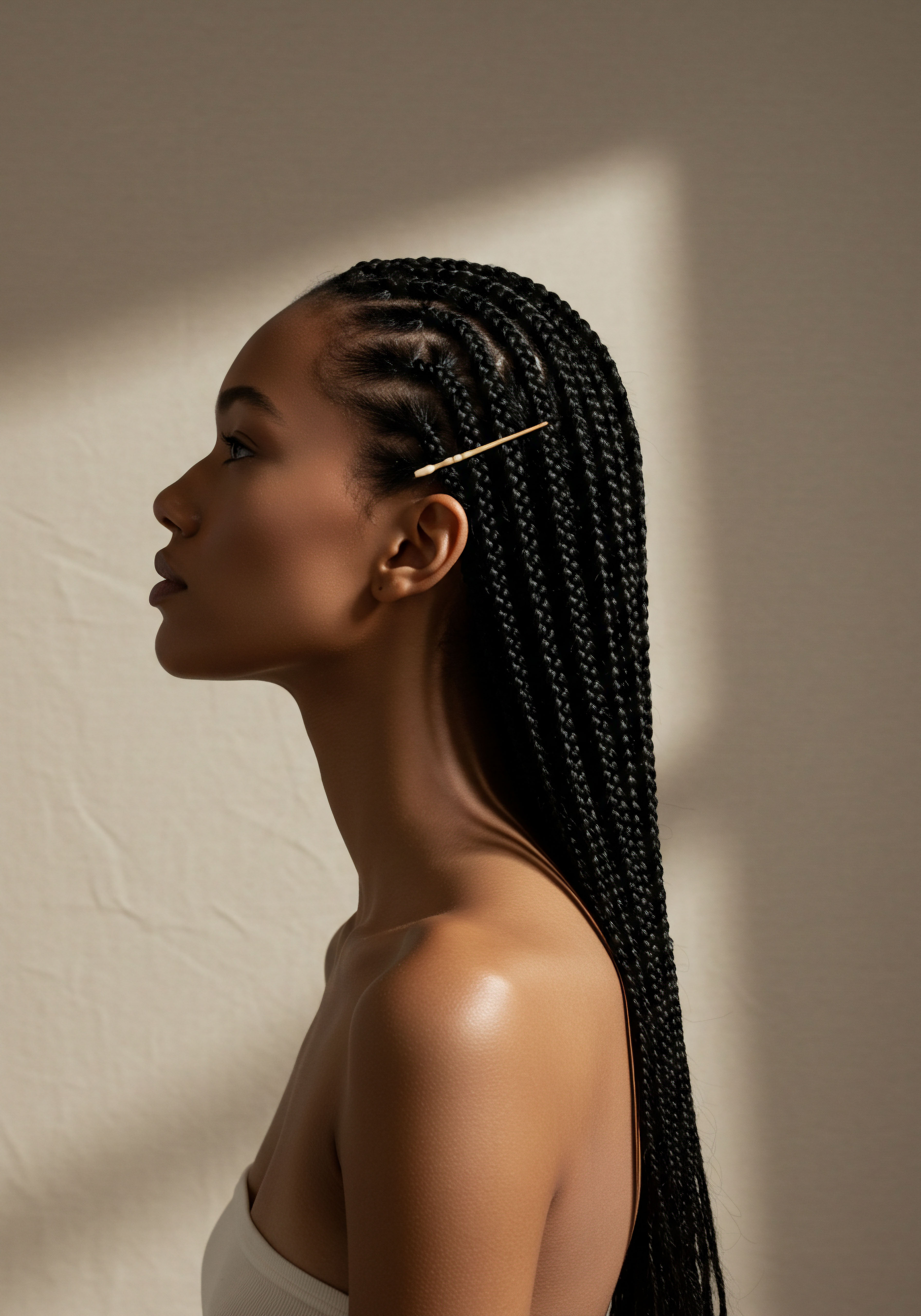
What Daily Practices Offer Hair Protection?
Our daily interactions with hair can significantly influence its defense against pollution. Simple actions, often rooted in traditional wisdom, serve as foundational steps. Regular cleansing with mild, sulfate-free shampoos helps to remove accumulated pollutants and debris without stripping the hair’s natural oils.
This cleansing is crucial, as pollutants absorbed onto the hair surface can be removed through immediate washing, but chemicals that penetrate deeper may accumulate, causing long-term damage. Following a thorough cleanse, applying a quality conditioner helps to seal the cuticle, providing a smoother surface that is less likely to trap particulate matter.
Beyond washing, how we style our hair also plays a role. Protective styles like braids, twists, or buns physically shield the inner parts of the hair and the scalp from direct exposure to airborne pollutants. This physical barrier reduces the surface area vulnerable to pollutant deposition.
Wearing hats or scarves when outdoors provides an additional layer of defense, acting as a direct shield against environmental aggressors. These simple, intentional choices form a protective cocoon for our strands.
Daily cleansing, protective styling, and covering the hair offer essential physical and chemical defense against urban pollutants.

Which Natural Ingredients Create a Barrier?
Certain natural ingredients possess qualities that allow them to form a delicate, yet effective, barrier on the hair’s surface, helping to deter pollutants. Plant oils, such as Coconut Oil, Argan Oil, and Jojoba Oil, are renowned for this ability. They coat the hair shaft, smoothing the cuticle and creating a physical shield that makes it harder for particulate matter to adhere. Coconut oil, for instance, has a molecular structure that allows it to penetrate the hair shaft, offering protection from within while also providing a surface barrier.
Shea Butter, a rich emollient, also contributes to this protective layer. Its fatty acid composition helps to seal moisture into the hair, which in turn helps to keep the cuticle smooth and less prone to pollutant infiltration. These oils and butters also lend a healthy sheen, reflecting light and making the hair appear more vibrant, even in challenging urban conditions.
| Ingredient Coconut Oil |
| Mechanism of Action Penetrates hair shaft, forms surface film |
| Benefit Against Pollutants Reduces protein loss, creates physical barrier |
| Ingredient Argan Oil |
| Mechanism of Action Rich in fatty acids and Vitamin E |
| Benefit Against Pollutants Forms protective film, provides antioxidant support |
| Ingredient Jojoba Oil |
| Mechanism of Action Mimics natural sebum, lightweight |
| Benefit Against Pollutants Seals cuticle, prevents pollutant adherence |
| Ingredient Shea Butter |
| Mechanism of Action Heavy emollient, rich in vitamins |
| Benefit Against Pollutants Locks in moisture, smooths cuticle, forms protective layer |
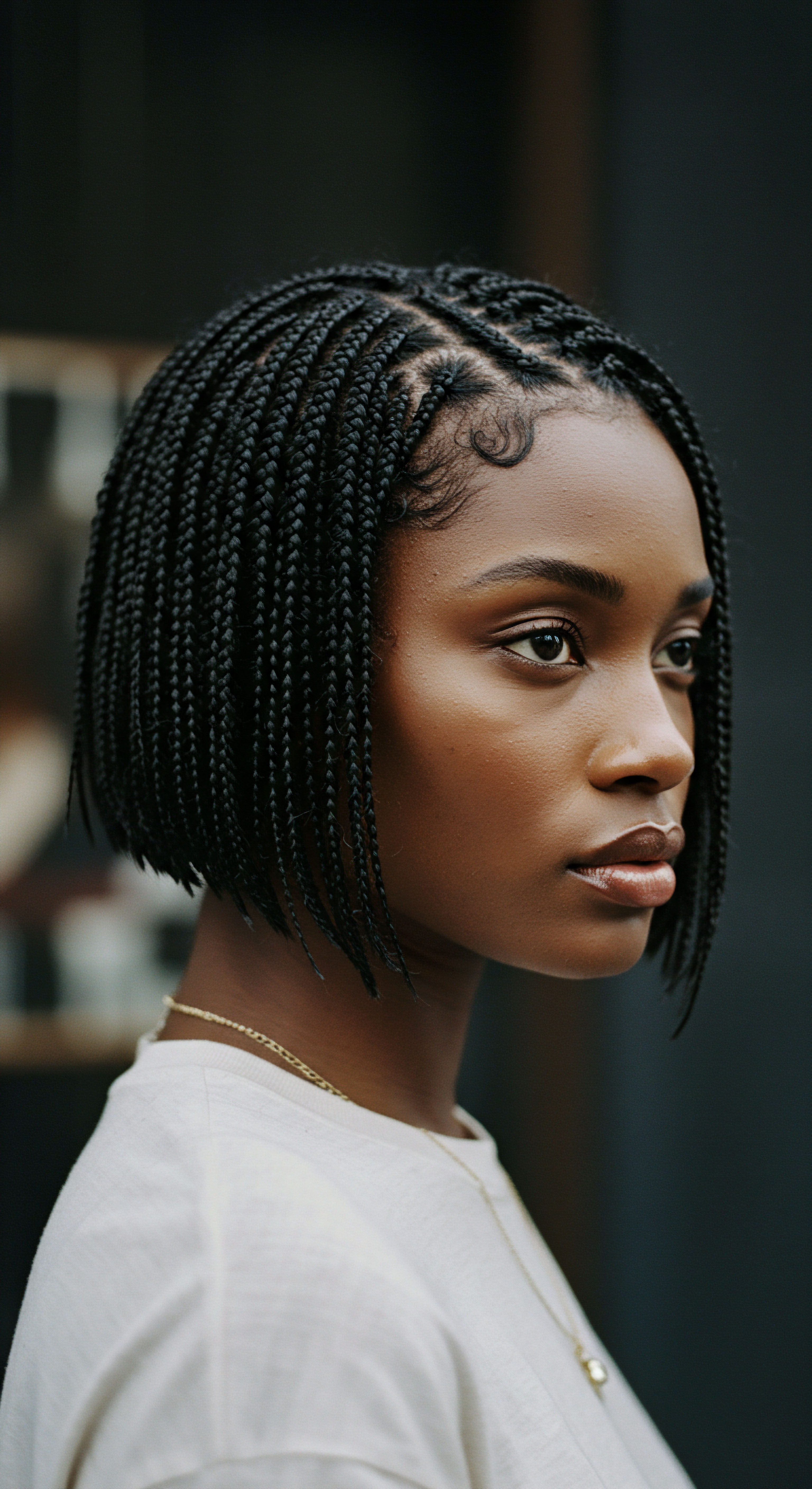
Can Antioxidants From Nature Help?
Urban pollutants often trigger oxidative stress in hair and scalp by generating free radicals. Natural ingredients rich in Antioxidants can counteract this damage by neutralizing these harmful molecules. Green tea extract, for example, is a potent source of polyphenols, which are powerful antioxidants. These compounds can help protect hair proteins from degradation caused by environmental stressors.
Rosemary Extract is another natural ingredient celebrated for its antioxidant and anti-inflammatory properties. When applied to the scalp, it can help mitigate the irritation and inflammation often caused by pollutant deposition. Similarly, Vitamin E, found in many plant oils like sunflower oil, acts as a lipid-soluble antioxidant, protecting the hair’s natural lipid barrier from oxidative damage. Integrating these antioxidant-rich elements into hair care routines offers a vital defense against the unseen chemical assaults of urban air.
Other botanical extracts, such as those from blueberry, grape, and pomegranate, are also recognized for their antioxidant and skin-protective properties, offering a promising approach to enhancing scalp resilience against environmental stress. These ingredients not only shield the hair but also support the overall health of the scalp, which is the foundation for healthy hair growth.

Relay
As we move deeper into the scientific and cultural nuances of safeguarding textured hair, we uncover the intricate dance between our strands and the urban environment. This segment transcends surface-level understanding, inviting a closer examination of how natural compounds truly interact at a molecular level and how ancestral wisdom offers enduring solutions. It calls for a more discerning eye, appreciating the profound interplay of biological mechanisms, environmental pressures, and the deep-seated heritage that informs our care practices. Here, the focus is on a sophisticated understanding, supported by scientific inquiry and a respect for lived experience.

How Do Pollutants Compromise Hair Health?
Urban pollutants inflict damage upon hair through several interconnected pathways. Fine particulate matter (PM2.5), for instance, contains a variety of toxic chemicals, including heavy metals and polycyclic aromatic hydrocarbons (PAHs), which can accumulate within the hair structure. These insidious agents trigger Oxidative Stress, leading to an imbalance between reactive oxygen species (ROS) production and the body’s ability to neutralize them. This oxidative cascade damages hair follicles, contributes to scalp inflammation, and can disrupt the normal hair growth cycle.
A significant aspect of this damage involves the hair’s protein integrity. A study demonstrated that exposure of hair fibers to particulate matter and UV-A radiation resulted in a dose-dependent increase in Protein Carbonylation in both the cuticle and cortex. Protein carbonylation signifies oxidative modification, leading to a loss of hair fiber structural integrity and increased cuticle permeability. This makes the hair more vulnerable to further damage and affects its mechanical properties, resulting in decreased strength, shine, and increased brittleness.
Moreover, particulate matter can impede hair growth by triggering Apoptosis (programmed cell death) in keratinocytes within cultured scalp hair follicles. This cellular assault, mediated by increased ROS production and inflammatory cytokines, directly impairs hair growth mechanisms. The presence of sebum on the hair surface can even favor the deposition of larger particulate matter, creating a cycle where pollution exacerbates issues like scalp irritation, itching, and excessive sebum production.

What Role Do Natural Chelators Play?
Heavy metals are a pervasive component of urban pollution, adhering to hair and potentially altering its composition. Natural ingredients with Chelating Properties can bind to these metal ions, helping to remove them from the hair’s surface and prevent their absorption. This is a critical line of defense, as certain metals like lead, cadmium, and mercury pose long-term health risks and can contribute to hair damage.
Cilantro (Coriandrum Sativum), for example, has been studied for its potential in heavy metal chelation. A randomized, double-blind, placebo-controlled trial involving metal foundry workers exposed to high levels of heavy metals found that cilantro tincture showed a strong percentage decrease in metals in post-urine and feces samples, consistently around 90-100% for all metals tested. While this study focused on systemic detoxification, the chelating compounds present in cilantro could theoretically assist in binding and removing metal deposits from hair surfaces when applied topically, preventing their detrimental effects on hair protein and cuticle integrity.
Other natural substances like Garlic (Allium Sativum) and certain green algae (Chlorophyta) also possess chelating capabilities, primarily due to their sulfur-containing compounds. These compounds can form stable complexes with metal ions, facilitating their removal.
| Natural Source Cilantro (Coriandrum sativum) |
| Key Compounds Various phytochemicals |
| Action on Heavy Metals Binds to metal ions, aids in removal |
| Natural Source Garlic (Allium sativum) |
| Key Compounds Organosulfur compounds (e.g. allicin) |
| Action on Heavy Metals Forms complexes with metals, supports detoxification |
| Natural Source Green Algae (Chlorophyta) |
| Key Compounds Phytochelatins, chlorophyll |
| Action on Heavy Metals Adsorbs and binds to heavy metal ions |

How Do Humectants and Emollients Offer Protection?
Urban environments, with their fluctuating humidity levels and pervasive pollutants, can leave textured hair prone to dryness and brittleness. Here, the interplay of humectants and emollients becomes particularly significant. Humectants, such as Glycerin (plant-derived) and Aloe Vera, are hydrophilic substances that draw moisture from the surrounding environment into the hair shaft. This moisture-attracting ability is vital for maintaining hair hydration, especially when pollution can compromise the hair’s natural lipid barrier, leading to increased water loss.
However, a nuanced understanding is essential ❉ in very dry climates, humectants can sometimes draw moisture from the hair into the air, potentially causing dryness. Therefore, their application should be balanced with the environmental humidity.
Emollients, including plant oils like Avocado Oil and Jojoba Oil, and butters like Shea Butter, work in concert with humectants. While humectants attract moisture, emollients seal it in, creating a protective film that smooths the cuticle. This sealed, smooth surface is less porous and therefore less susceptible to pollutant penetration and adhesion. The combination of these ingredient types helps to maintain the hair’s integrity, reducing frizz and preserving its natural elasticity, even in challenging urban conditions.
The use of natural oils, like coconut, amla, or cold-pressed sunflower oil, before stepping out, can create a protective barrier against pollution while nourishing the hair. This practice, often seen in traditional hair care, highlights the enduring wisdom of using natural lipids to fortify hair against environmental stressors.
Natural ingredients like cilantro and garlic can act as chelators, binding to and aiding in the removal of heavy metals that adhere to hair from urban pollution.
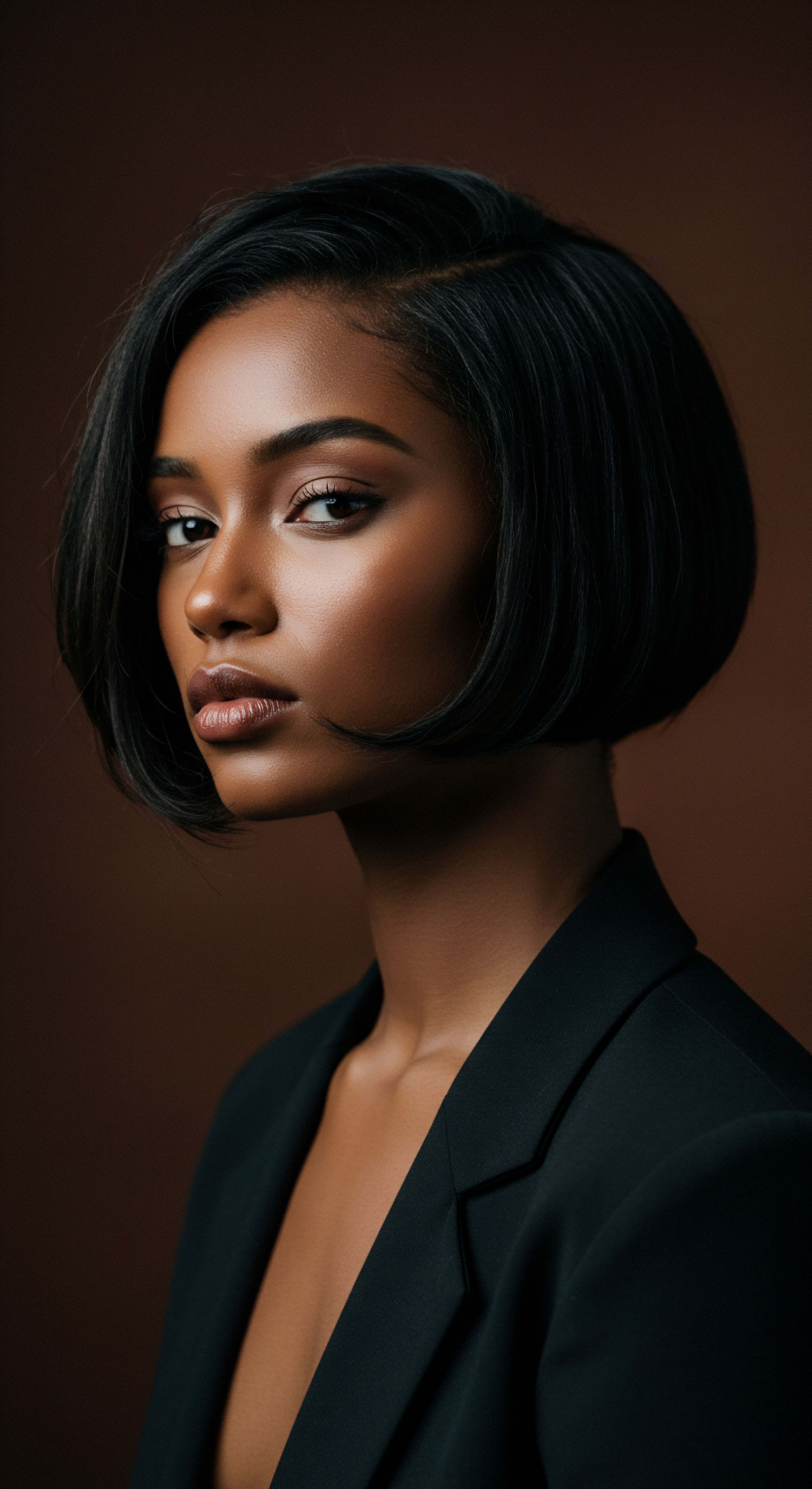
Can Plant Extracts Support Hair Growth Against Pollution-Induced Loss?
The detrimental effects of urban pollution on hair health extend to hair growth itself, with studies showing a reduction in key proteins for hair growth and increased cell death in hair follicles. This makes the role of natural extracts that support follicular health particularly pertinent. Certain plant extracts have demonstrated potential in mitigating pollution-induced hair loss by addressing oxidative stress, inflammation, and supporting cell proliferation.
For instance, Onion Extract has gained attention for its potential anti-pollution benefits. It contains high concentrations of sulfur and flavonoids, which contribute to its antimicrobial, antioxidant, and anti-inflammatory properties. These qualities can help combat dandruff, oily scalps, and other scalp conditions aggravated by pollution. More significantly, onion extract is believed to stimulate blood flow to the scalp, potentially increasing hair growth, and it has been cited as a remedy for pollution-induced hair loss.
Beyond onion, various plant extracts have been shown to increase the survival and proliferation of dermal papilla cells in vitro, enhance cell proliferation and hair growth in hair follicles ex vivo, and promote hair growth in animal models. These effects are often linked to the alleviation of oxidative stress and inflammatory responses. For example, Sophora Japonica, a plant recognized in traditional Chinese medicine, possesses antioxidant, antibacterial, and anti-inflammatory properties, with documented photoprotective and anti-pollution benefits. Such botanical compounds offer a multi-pronged approach, not only shielding hair from direct pollutant impact but also supporting the underlying health of the scalp and follicles to counteract the long-term effects of urban living.
A deeper dive into the cellular mechanisms reveals that some plant extracts can influence signaling pathways crucial for hair growth. For instance, studies have shown that certain plant extracts, including those from licorice and salvia miltiorrhiza, can enhance the expression of Beta-Catenin, a key factor in the Wnt/beta-catenin signaling pathway. This pathway is instrumental in promoting the proliferation and migration of hair papilla cells, thereby stimulating hair growth.
Furthermore, these extracts have been observed to reduce the expression of hair growth inhibitory factors like TGF-beta1 and inflammatory factors such as IL-6, while also enhancing the secretion of VEGF (Vascular Endothelial Growth Factor), which supports blood supply to hair follicles. These findings underscore the sophisticated ways in which natural ingredients can contribute to hair resilience in polluted environments, moving beyond simple barrier formation to support the very biology of hair growth.

Reflection
Our journey through the delicate yet robust world of textured hair and its interaction with urban pollutants reveals a profound connection between ancient wisdom and modern scientific understanding. The hair, often seen as a mere aesthetic element, stands as a testament to resilience, continually adapting and responding to its environment. We have seen how natural ingredients, far from being simplistic remedies, possess complex biochemical profiles that offer multi-layered protection. They cleanse, they shield, they chelate, and they nourish the very foundations of growth.
The gentle hand that applies a botanical oil or the thoughtful choice of a protective style echoes centuries of care, now amplified by our growing knowledge of cellular mechanisms and environmental science. As we continue to navigate increasingly urbanized landscapes, the quiet strength of nature, thoughtfully applied, offers a path toward enduring hair health, celebrating the unique beauty of textured strands in every twist and coil.
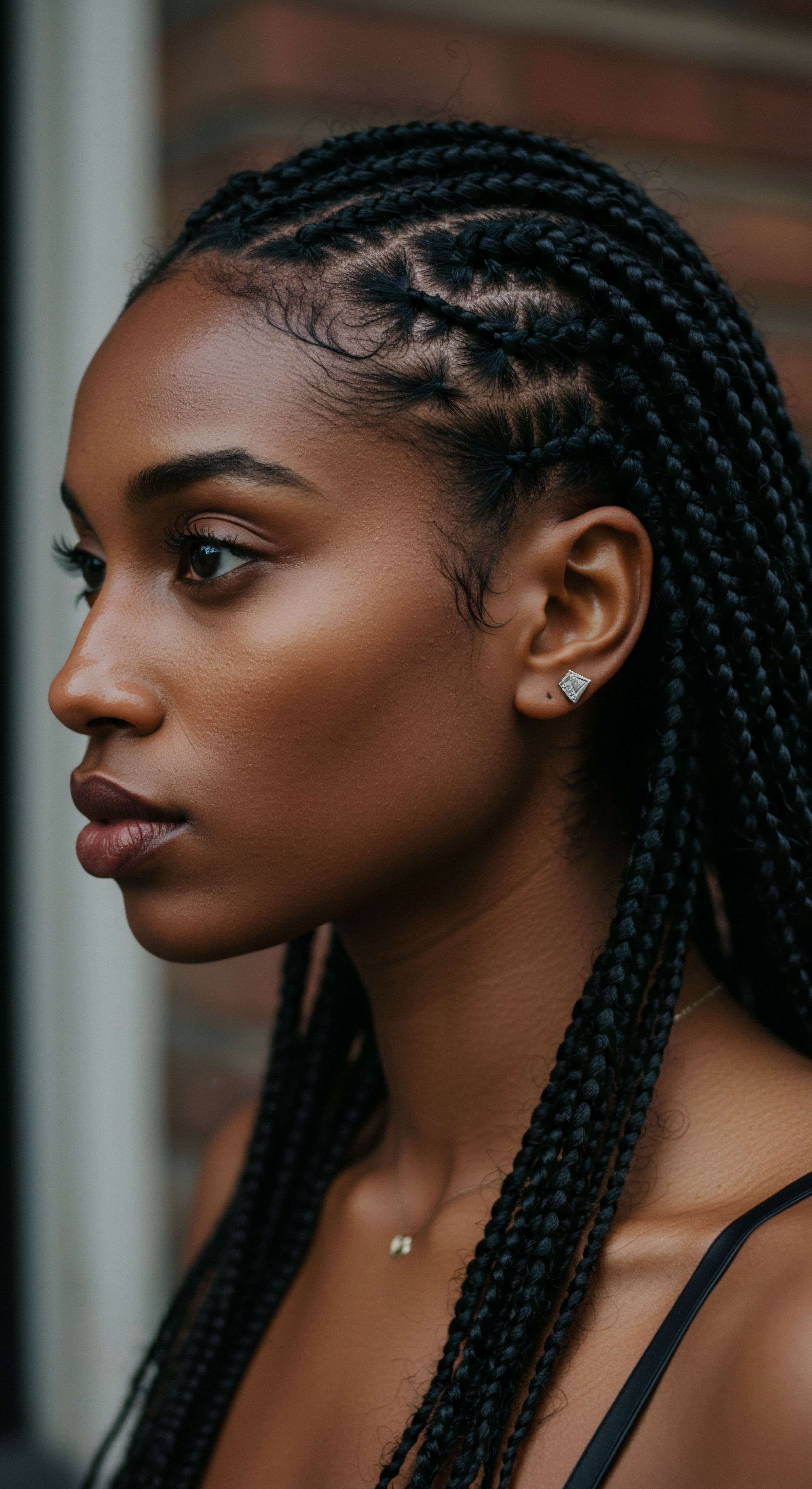
References
- Kwon, H. C. (2019). The Impact of Air Pollutants on Hair Health. Presented at the 28th European Academy of Dermatology and Venereology (EADV) Congress.
- Wang, J. et al. (2018). Pollution Damage and Protection of Asian Hair. Cosmetics, 5(1), 17.
- Malinauskyte, E. & Gourion-Arsiquaud, S. (2021). Protein Carbonylation as a Reliable Read-Out of Urban Pollution Damage/Protection of Hair Fibers. Cosmetics, 8(4), 98.
- Rajput, R. (2015). Understanding Hair Loss due to Air Pollution and the Approach to Management. Hair Therapy and Transplantation.
- Nori, M. (2021). Impact of Environmental Stressors on Hair. NYSCC.
- Kwon, O. S. et al. (2016). Particulate Matters Induce Apoptosis in Human Hair Follicular Keratinocytes. PLoS One, 11(7), e0159212.
- Lee, Y. et al. (2021). Can Plant Extracts Help Prevent Hair Loss or Promote Hair Growth? A Review Comparing Their Therapeutic Efficacies, Phytochemical Components, and Modulatory Targets. International Journal of Molecular Sciences, 22(20), 11132.
- Sengupta, A. et al. (2018). Scientific Research on Natural Heavy Metal Chelators ❉ Testing What Works. Journal of Complementary and Integrative Medicine, 15(4).
- Kharat, S. et al. (2019). A Review of Herbal Compounds for Chelation Therapy in Heavy Metals Toxicity. Journal of Herbmed Pharmacology, 8(2), 79-84.
- Chen, Y. et al. (2023). Screening of Anti-Hair Loss Plant Raw Materials Based on Reverse Network Pharmacology and Experimental Validation. Pharmaceuticals, 16(8), 1146.